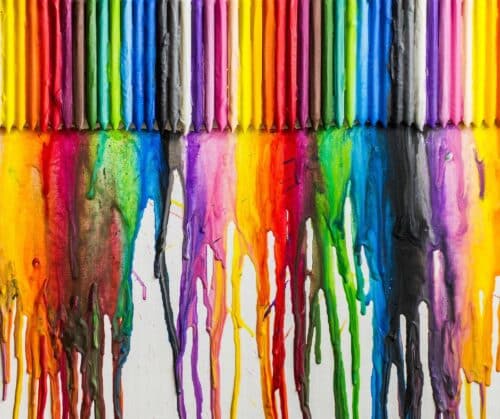The dumpster rental industry can be a very colorful world – especially when you are called to provide services to the Crayola Experience in Orlando, Florida! Crayola Experience is a very large facility of more than 70,000 square feet which includes 27 attractions. Kids and families have a blast starring in their very own coloring page, naming and wrapping their very own Crayola crayon, and learning how crayons are made. As our team provided dumpsters to Crayola Experience for facility updates and renovations, it got us thinking about all the great things you can do with crayons – even after they are used.
Upcycle and Repurpose Crayons by Being Creative

- Paint by Crayon – this project requires crayons and a poster board. You can glue the crayons to the board and then blow dry the crayons on high heat. This will cause the crayons to melt and “paint” the poster (you can also use white canvas or anything else you’d want to paint).
- Baked Crayons – Crayons can be melted down and re-shaped into fun shapes. Just be sure to remove the paper before you stick them in the oven. It is fun to use silicone baking mats that come in a variety of shapes and sizes like hearts, flowers, bees, or holiday-themed.
- Crayon Candles – You can also melt the crayons down and layer the colors into small glass jars to create your own candle. Add in a few drops of your favorite essential oils.
- Crayon Playdough – using crayons, vegetable oil, flour, salt, cream of tartar, and water, you can create colorful playdough out of your broken or used crayons.
Recycle Crayons by Donating
For those people who may not have the time, energy, or desire to be creative with broken or old crayons – there is also the option of recycling them! Roughly 12 million crayons are produced every day, and 60 million are thrown away in landfills every year (can you imagine how many dumpsters it would take to dispose of them all?!). Because crayons are petroleum products, it can take… a very long time for crayons to biodegrade. The better option is to donate them to places that do want to upcycle or repurpose them! One great organization is the National Crayon Recycle Program. The National Crayon Recycle Program recycles unwanted, rejected, broken crayons into new crayons, keeping thousands of pounds out of landfills and back into the creative hands of children!
A Colorful World for All
We love the opportunity we get at Roll-Off Dumpster Direct to serve a variety of industries, as it helps us learn about the many options for recycling or repurposing items we never would have thought of beforehand. Providing dumpsters to Crayola Experience was one of our favorite jobs of the year and we are excited to see how they enhance their facility for kids and families in the future.